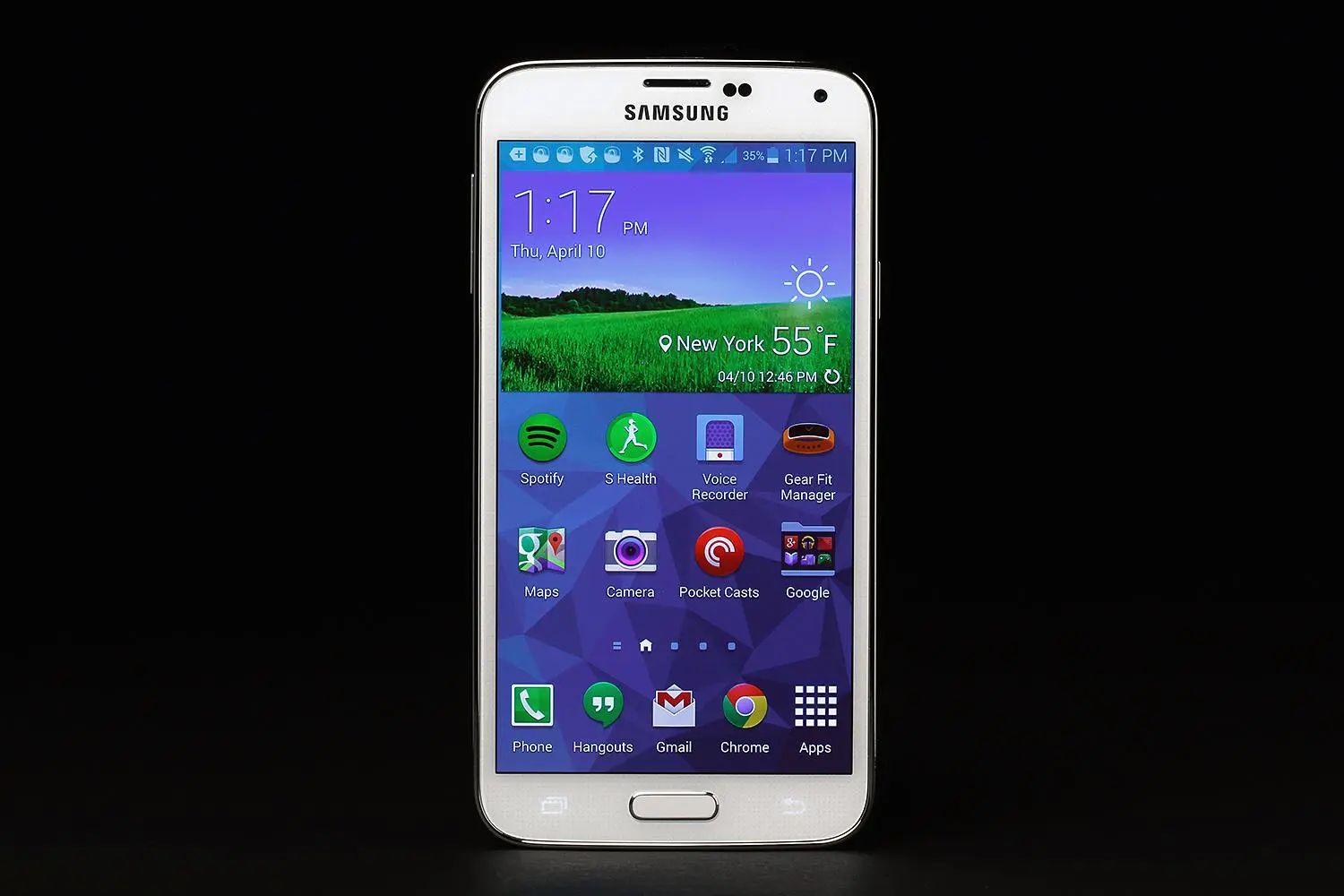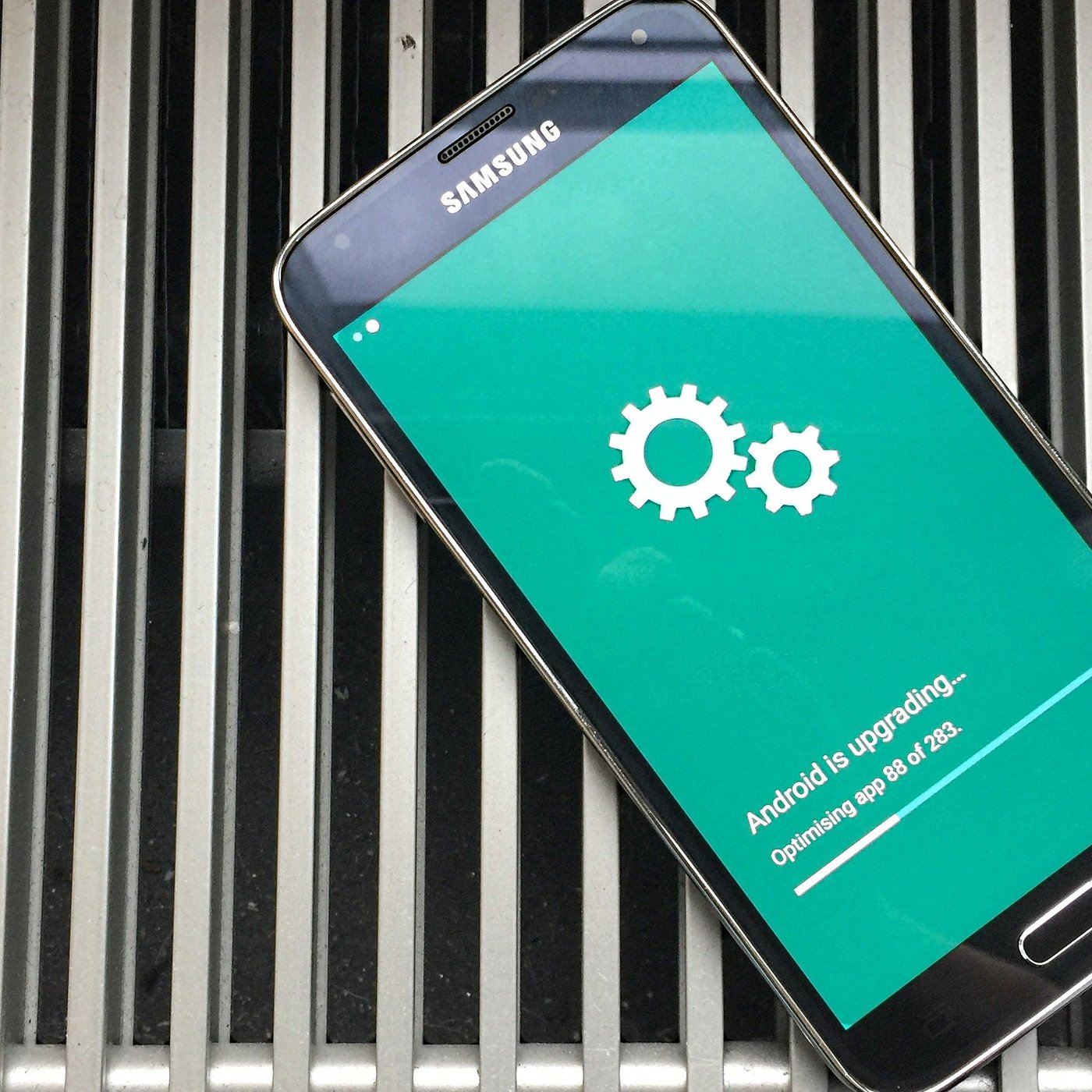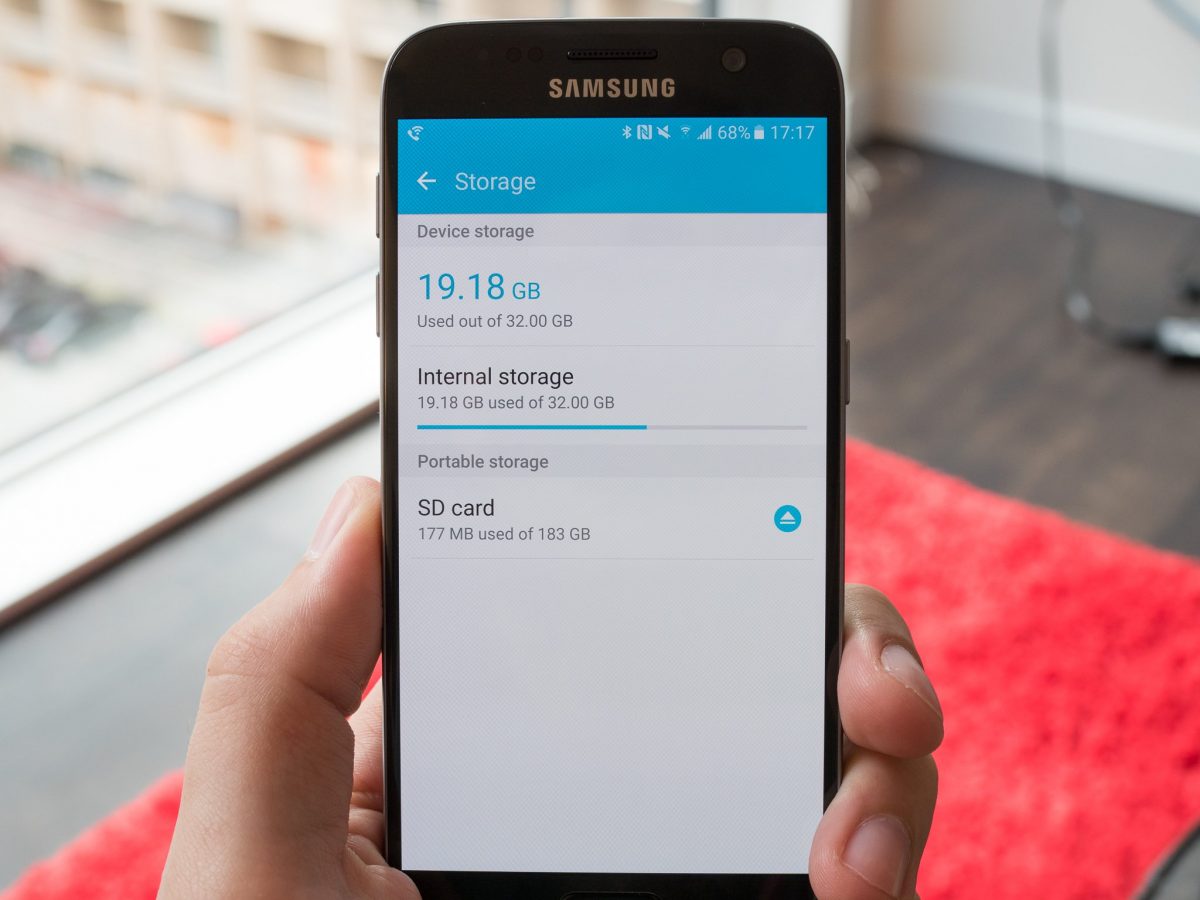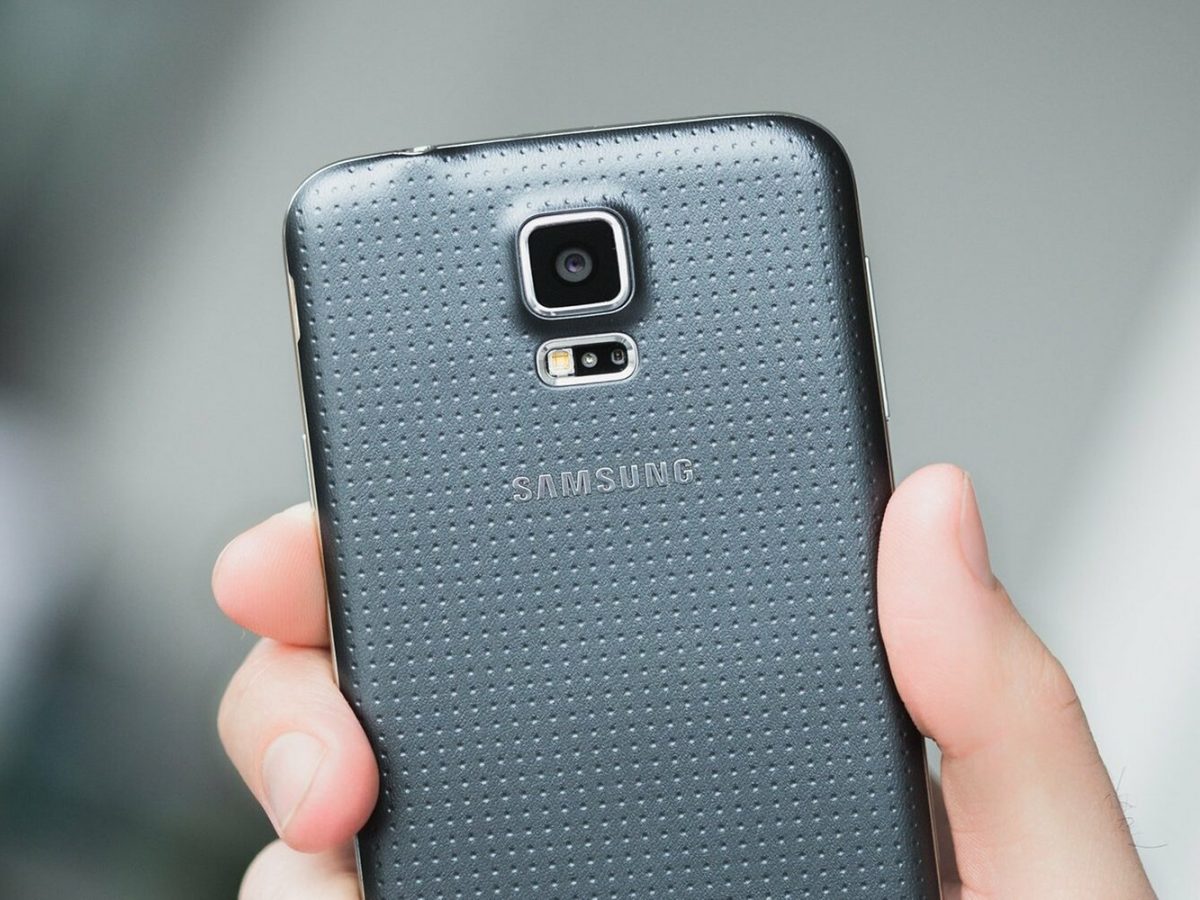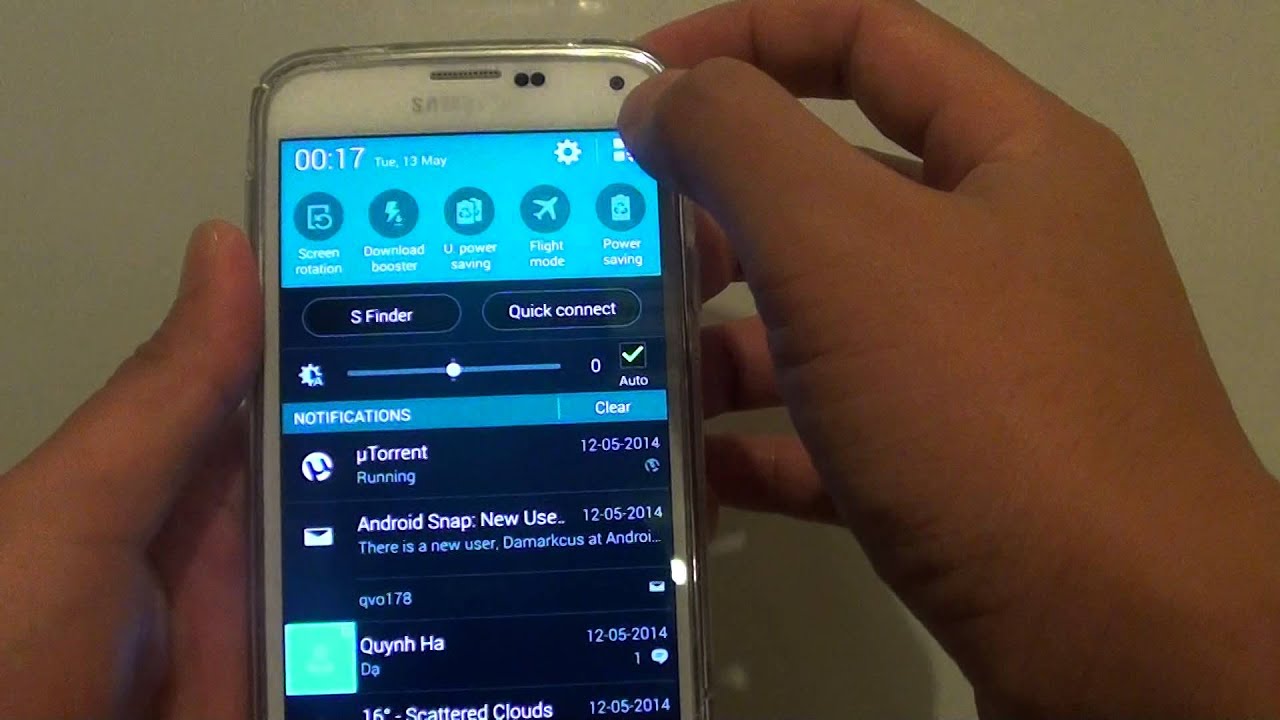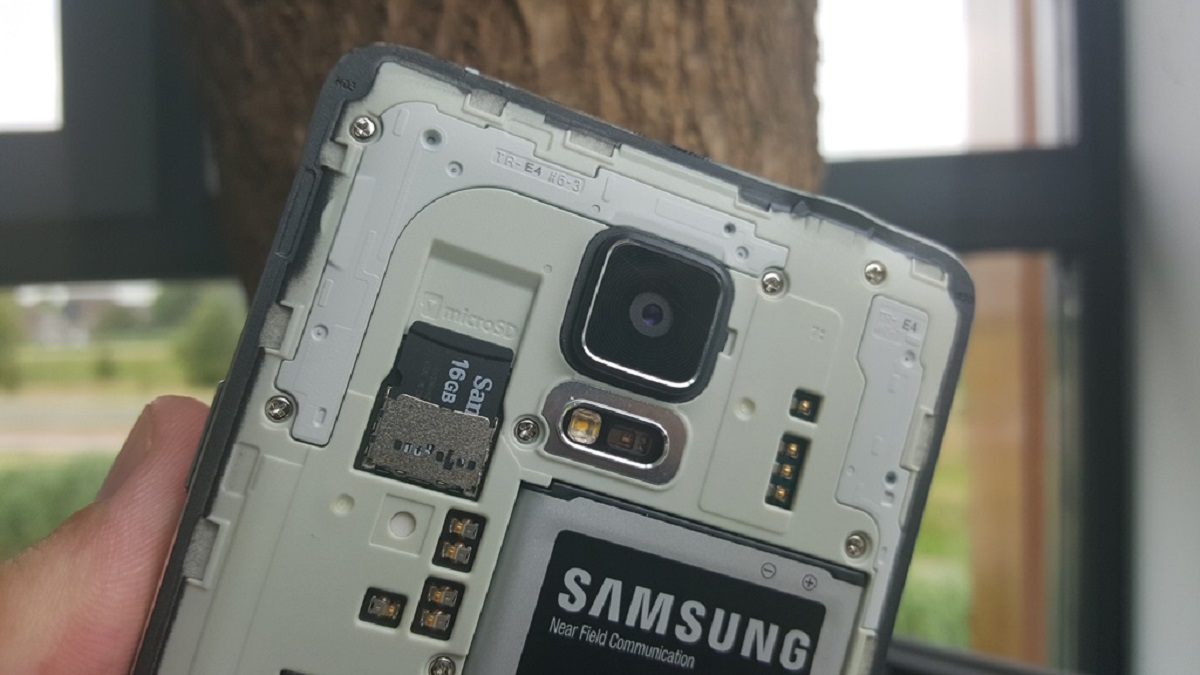Introduction
The Samsung Galaxy S5 is a popular smartphone known for its advanced features and stunning display. However, like any electronic device, it may encounter screen-related issues from time to time. Whether you’re experiencing unresponsive touch functionality, a black screen, or display abnormalities, it can be frustrating and disruptive to your daily activities.
In this article, we will provide you with several solutions to fix common screen issues on your Samsung Galaxy S5. These troubleshooting steps can help you resolve problems without having to seek professional assistance or spend money on repairs.
Before proceeding with the solutions, it’s important to note that some issues may be hardware-related and may require professional intervention. If the screen problem persists after attempting the following steps, it’s advisable to reach out to Samsung support or a trusted repair service for further assistance.
Now, without further ado, let’s dive into the various methods to troubleshoot and fix screen issues on your Samsung Galaxy S5.
Common Screen Issues
The Samsung Galaxy S5 may encounter several common screen issues that can hinder the device’s functionality and user experience. Here are some of the most frequently reported problems:
- Unresponsive Touch Screen: This problem occurs when the phone’s touch screen fails to register touch inputs or becomes intermittently unresponsive. It can make it difficult to navigate the device and use apps effectively.
- Black Screen: A black screen issue can happen when the display remains blank despite the phone being powered on. This can be caused by software glitches, screen damage, or other underlying factors.
- Screen Flickering: Screen flickering is characterized by the display flashing on and off rapidly. It can be quite distracting and may indicate a hardware or software problem.
- Screen Freezing: The screen freezing issue causes the device to become unresponsive, with the display freezing on a particular image or screen. This can happen randomly or while running specific apps or functions.
- Display Abnormalities: This includes issues like discoloration, lines or stripes appearing on the screen, or distorted images. Such abnormalities can make it challenging to view content clearly.
Understanding the specific screen issue you are facing can help in finding the most appropriate solution. Now that we have identified the common problems, let’s move on to the troubleshooting steps that can help fix these screen issues on your Samsung Galaxy S5.
Restarting the Device
One of the simplest yet effective solutions for fixing screen issues on your Samsung Galaxy S5 is to restart the device. Restarting can help resolve temporary glitches or software conflicts that may be causing the screen problem. Here’s how you can restart your Galaxy S5:
- Soft Reset: Press and hold the Power button until you see the Power off menu. Select the “Restart” option from the menu, and your device will reboot.
- Battery Removal: If your Galaxy S5 has a removable battery, power off your phone and remove the battery. Wait for a few seconds and then reinsert the battery. Power on the device after reinserting the battery.
- Force Restart: If your phone is unresponsive and you’re unable to access the Power off menu, perform a force restart by pressing and holding the Power button and Volume Down button simultaneously for about 10-15 seconds. Release the buttons when the device vibrates or when the Samsung logo appears.
Restarting the device can clear temporary cache and background processes, potentially resolving minor software-related screen issues. If the problem persists after restarting, proceed to the next troubleshooting step.
Cleaning the Screen
Oftentimes, screen issues on the Samsung Galaxy S5 can be caused by dirt, oil, or smudges on the screen. Cleaning the screen regularly can help improve touch sensitivity and address display abnormalities. Here’s how you can effectively clean your Galaxy S5 screen:
- Power Off: Before cleaning the screen, ensure that your device is powered off to avoid accidental touches.
- Gently Wipe: Use a microfiber cloth or a soft, lint-free cloth to gently wipe the screen. Avoid using abrasive materials or harsh chemicals as they can damage the screen.
- Remove Tough Stains: For stubborn stains or fingerprints, dampen the cloth slightly with water or screen cleaning solution specifically designed for electronic devices. Gently wipe the screen in a circular motion until the stains are removed.
- Avoid Excessive Moisture: Be cautious not to apply excessive moisture to the device. Avoid spraying directly onto the screen and ensure that the cloth is only slightly damp, not dripping wet.
- Dry Thoroughly: After cleaning, use a dry part of the cloth to thoroughly dry the screen. This helps prevent moisture from seeping into the device.
- Protective Screen Guard: Consider applying a screen protector to protect your Galaxy S5 display from scratches and smudges in the future.
Regularly cleaning your device’s screen can help maintain its clarity and responsiveness. However, if the screen issues persist even after cleaning, proceed to the next troubleshooting step.
Adjusting Screen Sensitivity
If you’re experiencing touch-related issues on your Samsung Galaxy S5, adjusting the screen sensitivity settings can often help improve responsiveness. Here’s how you can adjust the screen sensitivity:
- Access Settings: Go to the Home screen and swipe down from the top to open the Notification Panel. Tap the gear icon to access the Settings menu.
- Select Display: In the Settings menu, scroll down and tap on “Display.”
- Adjust Screen Sensitivity: Look for the option called “Touch Sensitivity” or “Screen Sensitivity” and tap on it.
- Slide to Increase Sensitivity: In the screen sensitivity settings, you will see a slider. Slide it to the right to increase the sensitivity of the screen. Test the touch response after adjusting the sensitivity.
- Revert if Necessary: If the increased sensitivity causes unintended touches or erratic behavior, you can adjust the slider to a lower level to find the optimal screen sensitivity for your usage.
By adjusting the screen sensitivity, you can fine-tune the touch response according to your preference and potentially resolve touch-related issues. If the screen issues persist even after adjusting the sensitivity, proceed to the next troubleshooting step.
Performing a Soft Reset
If your Samsung Galaxy S5 is experiencing persistent screen issues, performing a soft reset can help resolve various software-related glitches. A soft reset is a simple procedure that refreshes the device’s software without affecting your data. Here’s how you can perform a soft reset on your Galaxy S5:
- Simultaneously press buttons: Press and hold the Power button and Volume Down button together. Continue to hold the buttons until the device restarts.
- Release the buttons: When you see the Samsung logo or feel the device vibrate, release both buttons.
- Wait for the device to restart: The Galaxy S5 will restart, and you can release the buttons once the device boots up.
A soft reset helps clear out temporary software glitches and can resolve minor screen issues that may be caused by software conflicts. After performing the soft reset, check whether the screen issues have been resolved. If the problems persist, continue to the next troubleshooting step.
Clearing App Cache and Data
App data and cache accumulation can sometimes cause conflicts and affect the performance of your Samsung Galaxy S5, including screen-related issues. Clearing the app cache and data can help resolve these conflicts and potentially fix screen problems. Here’s how you can clear app cache and data on your device:
- Access Application Manager: Go to the Home screen and open the Settings menu. Scroll down and tap on “Apps” or “Application Manager” to access the list of installed apps on your Galaxy S5.
- Select the App: Scroll through the list of apps and select the one causing the screen issues. For example, if the issue occurs with a specific game, choose that game from the list.
- Clear the Cache: Inside the app’s settings, you will find options to clear the cache and data. Tap on “Clear Cache” to remove the temporary files associated with the app.
- Clear the Data (if necessary): If clearing the cache doesn’t resolve the issue, you can also choose to clear the app data. Tap on “Clear Data” or “Delete Data” to remove all data associated with the app, including settings and saved preferences. Note that clearing data will reset the app to its default state.
- Repeat the process: If you’re experiencing issues with multiple apps, repeat the steps for each problematic app.
Clearing the app cache and data can help resolve conflicts and improve the overall performance of the apps, potentially fixing screen issues. If the problems persist after clearing app cache and data, move on to the next troubleshooting step.
Updating Software
Keeping your Samsung Galaxy S5’s software up to date is crucial for maintaining optimal performance and addressing potential bugs or glitches that may cause screen issues. Regular software updates released by Samsung often include bug fixes and improvements that can resolve various problems. Here’s how you can check for and install software updates on your device:
- Access Settings: Open the Settings menu from the Home screen of your Galaxy S5.
- Scroll and select “Software Update”: Look for the “Software Update” or “About Phone” option in the settings menu and tap on it.
- Check for Updates: In the software update settings, you should find an option to check for new updates. Tap on it to initiate a scan for updates.
- Download and Install: If an update is available, follow the on-screen instructions to download and install the update on your device. Ensure that you have a stable internet connection and sufficient battery charge to complete the update process.
- Restart the Device: Once the update is installed, restart your Galaxy S5 to apply the changes.
Software updates often address known issues and can provide fixes for screen-related problems. It is recommended to keep your device up to date to ensure smooth performance and minimize screen issues. If the screen problems persist even after updating the software, proceed to the next troubleshooting step.
Performing a Factory Reset
If you have exhausted all other options and are still facing persistent screen issues on your Samsung Galaxy S5, performing a factory reset may help resolve the problem. A factory reset restores the device to its original factory settings, eliminating any software bugs or conflicts that may be causing the screen issues. However, keep in mind that performing a factory reset erases all data on your device, so it’s essential to back up your important files beforehand. Here’s how you can perform a factory reset on your Galaxy S5:
- Back Up Data: Before proceeding with the reset, ensure that you have backed up all your important data, including contacts, photos, videos, and documents, to an external storage device or cloud service.
- Access Settings: Open the Settings menu from the Home screen of your Galaxy S5.
- Navigate to System: Scroll down and select “System” or “General Management,” depending on your device’s software version.
- Select Reset: Look for the “Reset” option in the settings menu and tap on it.
- Choose Factory Data Reset: Tap on “Factory Data Reset” or “Reset Phone” (the wording may vary), and then select “Reset” or “Delete All” to confirm the reset process. You may have to enter your PIN, pattern, or password to proceed.
- Wait for the Reset: The factory reset process may take a few minutes to complete. Your device will reboot, and the screen issues should be resolved if they were caused by software conflicts or glitches.
- Restore Data: After the reset is finished, follow the on-screen prompts to set up your device. You can then restore your data from the backup you created earlier.
A factory reset should only be done as a last resort when all other troubleshooting steps have failed to fix the screen issues. If the problems still persist after the factory reset, it’s advisable to contact Samsung support or a professional repair service for further assistance.
Contacting Support or Repair Services
If you have tried all the previous troubleshooting steps and are still experiencing screen issues on your Samsung Galaxy S5, it may be time to seek professional assistance. Here are a few options you can consider:
- Contact Samsung Support: Samsung provides dedicated customer support for their devices. Visit the Samsung website or contact their customer support hotline to inquire about the screen issue you are facing. They may provide you with specific instructions or offer additional troubleshooting steps to resolve the problem.
- Visit an Authorized Service Center: Samsung has authorized service centers where trained technicians can diagnose and repair hardware or software issues. Check the Samsung website for a list of authorized service centers near your location, and schedule an appointment to have your Galaxy S5 inspected and repaired by professionals.
- Consult a Professional Repair Service: If your device is no longer under warranty or if you prefer an alternative to the official support channels, you can consider reaching out to professional repair services that specialize in smartphone repairs. Ensure that they have experience with Samsung devices and positive customer reviews before entrusting them with your Galaxy S5.
When contacting support or repair services, provide them with detailed information about the screen issue you are facing, including the troubleshooting steps you have already taken. This will help them understand the problem better and provide you with the most effective solution.
Remember, seeking professional assistance is recommended when you have exhausted all other options and are unable to resolve the screen issues on your own. They have the expertise and resources to diagnose and fix any underlying problems that may require specialized equipment or technical knowledge.
Conclusion
Dealing with screen issues on your Samsung Galaxy S5 can be frustrating, but there are several troubleshooting steps you can take to resolve them. From simple solutions like restarting the device and cleaning the screen to more advanced steps like adjusting screen sensitivity and performing a factory reset, these methods can help fix common screen problems.
It’s important to remember that not all screen issues can be resolved through troubleshooting. If you have tried all the recommended steps and the problems persist, it may be necessary to contact Samsung support, visit an authorized service center, or consult a professional repair service for further assistance.
Additionally, it’s crucial to keep your device’s software up to date and practice regular screen cleaning to prevent issues from occurring in the first place. Taking care of your Samsung Galaxy S5 and addressing screen issues promptly can help extend the lifespan of your device and ensure a smooth user experience.
By following the steps outlined in this article and seeking professional help when necessary, you can resolve most screen issues and continue enjoying the impressive features and functionality of your Samsung Galaxy S5.







